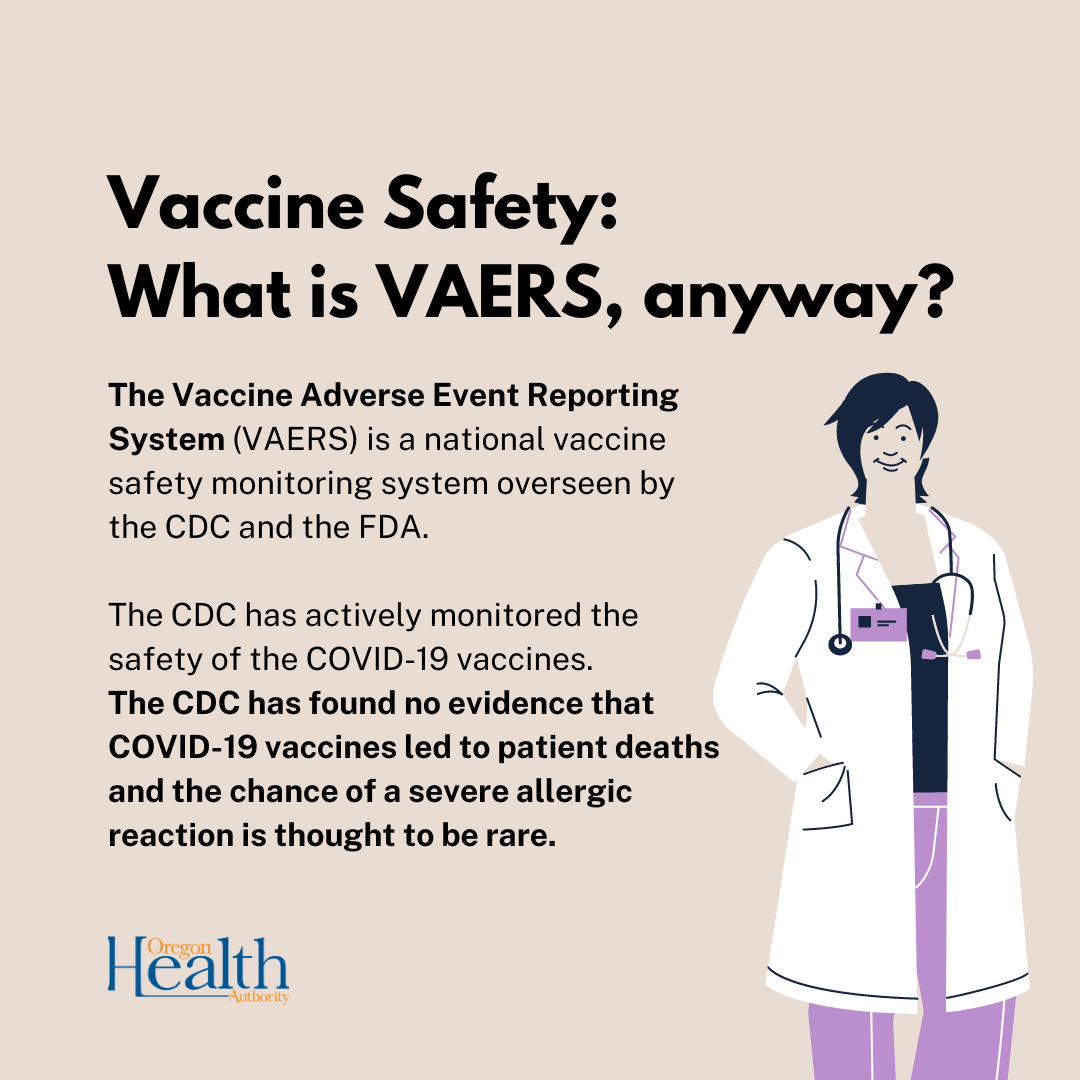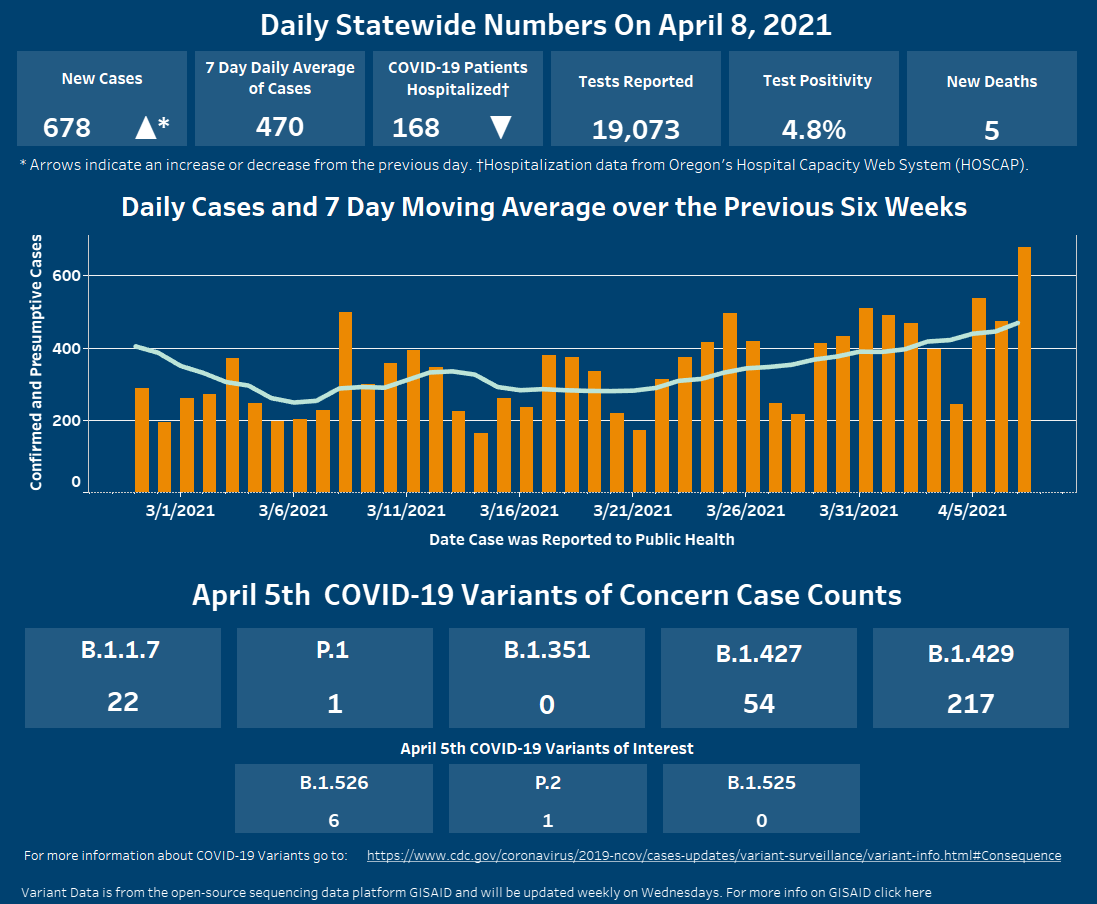April 8, 2021


For twenty years, Executive Pastor Edward Williams (pictured, right) has helped Mt. Olivet Baptist Church fulfill its mission. He oversees the North Portland church’s operations, human resources, finances and strategic planning. Mt. Olivet, he explains, is Oregon’s oldest African American Baptist church.
He shares his reasons for getting vaccinated:
|
“I see COVID as a public health issue that is a direct threat especially to our African American population. I have a daughter who is a respiratory therapist in Texas, treating nothing but COVID-19 patients. ‘Keep me breathing,’ is what I tell her. I heed her guidance, wisdom and experience. I don’t want COVID to short-circuit my time.
I know there are a lot of people who play the percentages game but here’s what I do know: Every death is a real death. There are a lot of families who have suffered a lot of loss. I don’t want to be numbered among that number when I could have done something to protect myself and others from suffering that fate.”
See a collection of Vaccine Voices on OHA’s blog. You can share your stories at the survey link in English or Spanish or use the hashtags #MyVaccineReason or #MiVozMiVacuna to share on your own social media channels. As we learn more about when and where vaccinations are available, information will continue to be posted at covidvaccine.oregon.gov and vacunacovid.oregon.gov.

While any new treatment can seem scary, the data that the Centers for Disease Control and Prevention (CDC) collect through the Vaccine Adverse Event Reporting System (VAERS) continue to confirm that the vaccines are both safe and effective.
VAERS is a national vaccine safety monitoring system overseen by the CDC and the U.S. Food and Drug Administration (FDA). It serves as a place for doctors, nurses, vaccine manufacturers and the general public to submit information about any health problems that occur after vaccination — even if the problem can’t be tied for certain to the vaccination itself. Only vaccines have a system like VAERS; other medicines don’t have this type of safety monitoring.
As the COVID-19 vaccines have been distributed throughout the U.S., the CDC has actively monitored the safety of these vaccines through VAERS.
Based on the more than 145 million doses of COVID-19 vaccine that had been administered by March 29, the CDC found that the chances of a severe allergic reaction were “rare” — only about two to five people per million vaccinated would experience something similar.
In most instances, these reactions occurred within 30 minutes of vaccination, which is precisely why folks are monitored immediately after their vaccinations. All vaccine sites are equipped to quickly and safely treat patients who experience reactions following vaccination.
Deaths occurring after COVID-19 vaccination — which have received an outsized amount of media attention — have also been reported to VAERS. It’s important to note, however, that those reports don’t automatically mean someone died because of a COVID-19 vaccine.
In fact, the CDC and the FDA have thoroughly investigated each one of these reports and have determined there is “no evidence that vaccination contributed to patient deaths.”
So why report it?
For starters, it’s required by law. The National Childhood Vaccine Injury Act (NCVIA) demands that all health care providers report any serious adverse event following vaccination even if it can’t be determined that the vaccination caused the event.
It is up to CDC and the FDA to determine whether a death was caused by the vaccination itself. After all, many people who have received a COVID-19 vaccine have also been managing the effects of another underlying condition. The same is true in Oregon, where we have given more than 2 million doses of COVID-19 vaccine and have tried hard to vaccinate older people — especially those residing in long term care facilities.
The CDC and the FDA review death certificates, autopsies and patient medical records to reach a conclusion. In the case of the COVID-19 vaccines, all these investigations revealed that that cause of death couldn’t be tied to the vaccine.
While it’s tragic that these individuals died, it’s vital that we understand the vaccine wasn’t the cause.
As distribution of the COVID-19 vaccine continues, so too will vaccine safety monitoring. And the evidence allows us to be confident that the vaccines remain a safe, reliable way to get back to doing the things we love.
To learn more about vaccine eligibility and where to find a vaccine provider in your community, visit OHA’s How to Find a COVID-19 Vaccine in Oregon page in English or Spanish.
 
Today, OHA announced that it had identified 168 COVID-19 vaccine breakthrough cases in Oregon through April 2, including three deaths.
Vaccine breakthrough cases are defined as instances in which an individual received a positive COVID-19 test result at least 14 days after the final dose of their respective COVID-19 vaccine.
OHA public health officials say it’s a reminder that while the Pfizer, Moderna and Johnson & Johnson COVID-19 vaccines are all highly effective at preventing severe COVID-19 illness and death, no vaccine is 100% effective, and vaccine breakthrough cases will occur.
Fortunately, these cases remain uncommon.
The number of vaccine breakthrough cases identified in Oregon (168) represents a very small proportion of the more than 700,000 people in Oregon who have now been fully vaccinated against COVID-19.
OHA also noted that vaccine breakthrough cases can be prevented through our trusted safety measures, such as masking, physical distancing and avoiding social gatherings.
Read the full press release here.

The Oregon Health Authority’s COVID-19 Weekly Report, released Wednesday, April 7, shows increased daily cases and increases in hospitalizations and deaths from the previous week.
OHA reported 2,964 new daily cases of COVID-19 during the week of Monday, March 29 through Sunday, April 4. That represents a 21% increase from the previous week.
- New COVID-19 related hospitalizations rose to 150, up from 137 last week.
- Reported COVID-19 related deaths rose to 19, up from 10 last week.
- There were 93,357 tests for COVID-19 for the week of March 28 through April 4 — a 1.4% increase from last week. The percentage of positive tests rose from 3.7% to 4.5%.
- People 70 years of age and older have accounted for 40% of COVID-19 related hospitalizations and 77% of COVID-19 related deaths.
The COVID-19 Weekly Outbreak Report shows 21 active COVID-19 outbreaks in senior living communities and congregate living settings, with three or more confirmed cases and one or more COVID-19 related deaths.
 
There are five new COVID-19 related deaths in Oregon, raising the state’s death toll to 2,439. Oregon Health Authority (OHA) reports 678 new confirmed and presumptive cases of COVID-19 today, bringing the state total to 168,795.
Today, OHA reported that 50,429 new doses of COVID-19 vaccinations were added to the state immunization registry. Of this total, 27,783 doses were administered on April 7 and 22,646 were administered on previous days but were entered into the vaccine registry on April 7.
The 50,429 doses submitted to the state’s immunization tracking system on April 7 was the highest number of COVID-19 vaccine doses entered into the database on a single day since the COVID-19 vaccines began to be administered in Oregon. The 7-day running average is now 34,733 doses per day.
As of today, 824,299 people have completed a COVID-19 vaccine series. There are 522,780 people who have had at least one dose.
Oregon has now administered a total of 1,083,978 doses of Pfizer, 971,012 doses of Moderna and 61,539 doses of Johnson & Johnson COVID-19 vaccines.
To date, 1,340,235 doses of Pfizer, 1,212,800 doses of Moderna and 185,500 doses of Johnson & Johnson COVID-19 vaccines have been delivered to sites across Oregon.
These data are preliminary and subject to change. OHA's dashboards provide regularly updated vaccination data, and Oregon’s dashboard has been updated today.
The new confirmed and presumptive COVID-19 cases reported today are in the following counties: Baker (4), Benton (4), Clackamas (65), Clatsop (6), Columbia (10), Coos (7), Crook (4), Curry (3), Deschutes (47), Douglas (14), Gilliam (1), Grant (7), Hood River (5), Jackson (88), Jefferson (5), Josephine (27), Klamath (42), Lane (47), Lincoln (8), Linn (18), Malheur (1), Marion (48), Morrow (1), Multnomah (108), Polk (14), Tillamook (8), Umatilla (6), Union (1), Wasco (1), Washington (69) and Yamhill (9).
Note: Details of today’s reported deaths will be published here at a later time.
COVID-19 hospitalizations
The number of hospitalized patients with COVID-19 across Oregon is 168, which is three fewer than yesterday. There are 38 COVID-19 patients in intensive care unit (ICU) beds, which is four fewer than yesterday.
The total number of patients in hospital beds may fluctuate between report times. The numbers do not reflect admissions per day, nor the length of hospital stay. Staffing limitations are not captured in this data and may further limit bed capacity.
More information about hospital capacity can be found here.
Learn more about COVID-19 vaccinations
To learn more about the COVID-19 vaccine situation in Oregon, visit our webpage (English or Spanish), which has a breakdown of distribution and other information.
 Did someone forward this to you? You can subscribe here.
|